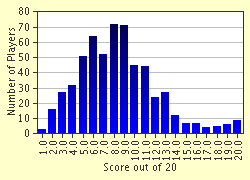Quiz Answer Key and Fun Facts
1. Pearl Harbor was the headquarters of the Commander in Chief, Pacific Fleet. On December 7, 1941 who held that post?
2. Who were the Secretary of War and the Secretary of the Navy, respectively, at the outbreak of the war with Japan?
3. Who was the Commanding General, U.S. Army Hawaiian Department on December 7, 1941?
4. Who was United States Ambassador to Japan on December 7, 1941?
5. Who was Chief of Naval Operations on December 7, 1941?
6. Who was Chief of the Japanese Naval General Staff at the outbreak of the war?
7. Who was the Japanese Ambassador to the United States on December 7, 1941?
8. What was 'Rainbow 5'?
9. Who was the Japanese tactical mastermind of the attack on Pearl Harbor?
10. What two U.S. aircraft carriers sortied from Pearl Harbor prior to the Japanese attack?
11. Who was Commander in Chief, Pacific Fleet Intelligence Officer at Pearl Harbor on December 7, 1941?
12. The Combat Intelligence Unit in Hawaii was called?
13. What did the U.S. Navy call the Japanese Navy's operational code?
14. What was the name given to the Japanese diplomatic cipher?
15. What was the name of Admiral Nagumo's flagship for the Pearl Harbor attack?
16. The message sent from the Japanese Imperial General Staff to the Combined Fleet on December 8, 1941 (Japan time) which signaled for the attack to go forward was:
17. On September 24, 1941 the Japanese Foreign Ministry sent a message to the Japanese consulate in Honolulu requesting reports on ships at anchor in Pearl Harbor. What was this message called?
18. The Japanese diplomatic message which severed diplomatic relations with the U.S. contained how many parts?
19. After having read the latest decoded Japanese diplomatic message on the evening of December 6, 1941, President Roosevelt reportedly uttered the following three words to Harry Hopkins:
20. There were a number of investigations conducted into the Japanese attack on Pearl Harbor. What was the very first of these investigations called?
Source: Author
Sportcon
This quiz was reviewed by FunTrivia editor
bloomsby before going online.
Any errors found in FunTrivia content are routinely corrected through our feedback system.

